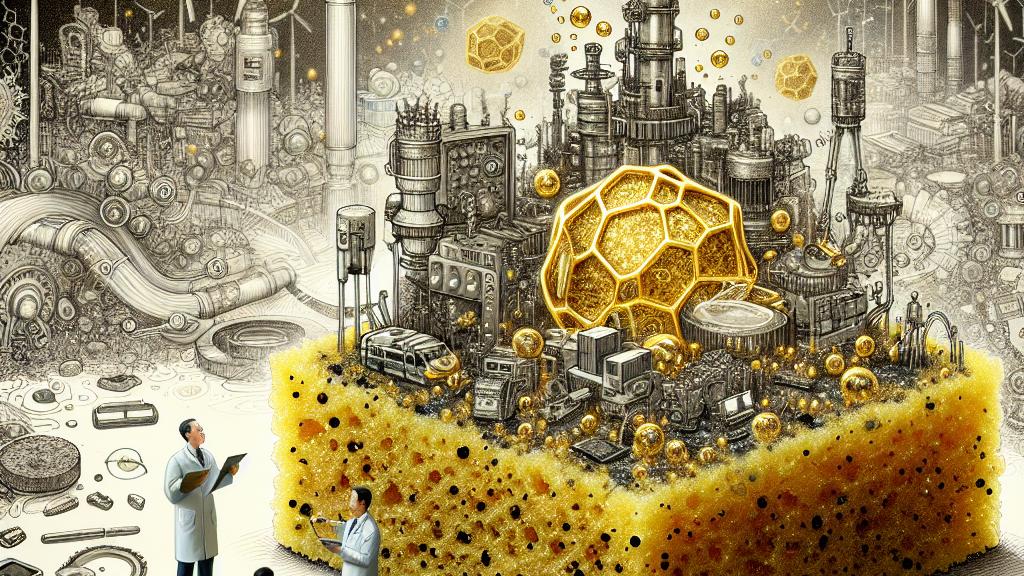Innovative Sponge Technology for Efficient Gold Recovery from E-Waste
Overview
- A groundbreaking sponge made from graphene oxide and chitosan promises to revolutionize gold recovery from electronic waste.
- Recent studies show this sponge is astonishingly ten times more effective than conventional gold extraction methods.
- By fostering cleaner and cost-effective recycling practices, it elegantly addresses both economic viability and environmental preservation.

Introduction to the Sponge Technology
In a stellar breakthrough occurring in Singapore, a dynamic team of researchers from the National University of Singapore, in collaboration with brilliant minds at Manchester University in the U.K. and Guangdong University in China, has ingeniously engineered an innovative sponge made entirely from graphene oxide and chitosan. This advancement isn't just a slight improvement; it embodies a monumental shift in strategies for extracting gold from electronic waste, which has traditionally been viewed as a cumbersome and inefficient process. Consider this: the recovery of gold from discarded electronics often results in significant environmental degradation and low yields. Hence, the introduction of this highly effective sponge could redefine our approach to gold recovery, paving the way for a new era of sustainable and efficient practices.
Composition and Functionality
Central to the sponge's impressive success are two remarkable materials: graphene oxide, known for its exceptional ion-absorbing capabilities, and chitosan, a versatile natural biopolymer celebrated for its effective reducing properties. By harnessing the self-assembly abilities of these components, the researchers created a sophisticated composite that adeptly binds with gold ions. Imagine a scenario where gold ions infiltrate this sponge; once absorbed, chitosan acts as a catalyst, converting these ions into solid gold that can be effortlessly collected. This method shines bright, not only for its cost-effectiveness but also for its tremendous reduction of environmental harm. Unlike traditional extraction methods that rely on hazardous substances like cyanide—with their notorious pollution potential—this progressive approach emerges as a beacon of hope, advocating for more eco-friendly recycling solutions.
Real World Testing and Impact
To validate its effectiveness, the sponge underwent extensive testing with actual e-waste samples obtained from a prominent recycling company. The results were nothing short of astonishing. The sponge managed to extract an impressive 17 grams of gold per gram of its own weight, equating to a staggering tenfold increase in efficiency compared to existing technologies. Such remarkable results do more than just highlight the sponge's capacity to recover valuable metals—they position it as a critical player in sustainable waste management strategies. As the global community contends with a burgeoning electronic waste crisis—a direct consequence of our escalating reliance on technology—this innovative sponge offers a promising solution. It underscores the vital connection between cutting-edge materials science and our collective goal of environmental responsibility, inspiring hope for a cleaner, greener future.

Loading...